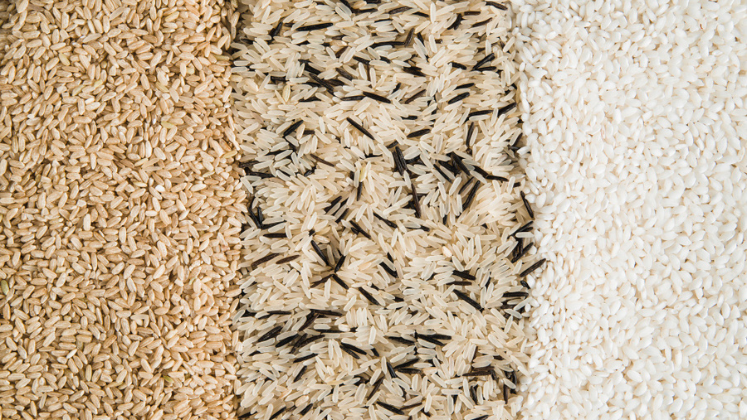Rice is one of the most widely consumed staple foods globally. It comes in various forms, each with its unique flavor, texture, and culinary use. Whether you’re making a simple bowl of rice or preparing an elaborate dish, understanding the different types of rice can enhance your cooking experience.
Types and Varieties of Rice
Rice is categorized based on various factors, including grain length, cooking properties, and its milling process. The most common classifications include long-grain, medium-grain, short-grain, and aromatic varieties. Understanding these categories can help you select the best rice for your needs. Let’s dive deeper into the different types and varieties of rice available in the market.
1. Long Grain Rice
- Description: Long-grain rice is characterized by its long, slender grains that are more than twice as long as they are wide. This variety includes well-known types like Basmati and Jasmine rice.
- Texture: When cooked, long-grain rice remains fluffy and separate. It is less sticky compared to short-grain rice, making it perfect for dishes like pilafs, fried rice, and curries.
- Popular Varieties: Basmati, Jasmine, and Traditional White Rice.
- Uses: Long-grain rice is ideal for dishes that require a light and fluffy texture. It pairs well with stir-fries and curries and as a side dish for grilled meats.
2. Medium Grain Rice
- Description: Medium-grain rice has grains that are shorter and plumper than long-grain rice. It tends to cook with a more tender texture and a slightly sticky consistency.
- Texture: When cooked, medium-grain rice is moist and tender, making it an excellent choice for dishes like risotto and paella, where a creamy texture is desired.
- Popular Varieties: IRRI-6 and IRRI-9 .
- Uses: Best for making risotto, paella, and pudding-like desserts.
3. Short Grain Rice
- Description: Short-grain rice is the shortest and plumpest variety. It has a higher starch content, which makes it sticky when cooked.
- Texture: The sticky, chewy texture of short-grain rice makes it ideal for sushi, rice balls, and Asian desserts like rice pudding.
- Popular Varieties: Sushi rice and Glutinous rice.
- Uses: Essential for sushi, rice balls, and other Asian dishes that require sticky rice.
4. Aromatic Rice
- Description: Aromatic rice varieties are known for their distinctive fragrances. While Basmati and Jasmine are the most internationally recognized aromatic types, there are several other regional aromatic varieties that also hold culinary and cultural value. .
- Texture: Typically long-grain, aromatic rice cooks to a fluffy, non-sticky texture, making it ideal for a range of savory dishes..
- Popular Varieties: D-98, Super Fine, Aromatic Hybrid.
- Uses: Aromatic rice is often used in Indian, Pakistani, Thai, and Southeast Asian cuisines for making flavorful dishes like biryani, palao and curries.
6. Brown Rice
- Description: Brown rice is a whole grain, meaning it retains its bran and germ layers. This gives it a nuttier flavor and higher nutritional value compared to white rice.
- Texture: Brown rice is chewier and takes longer to cook than white rice. It also has a more earthy flavor that complements a wide variety of dishes.
- Uses: Ideal for healthy meals, brown rice can be used in salads, bowls, stir-fries, and as a side dish for grilled meats.
Why Choose MFTC for Your Rice Needs?
At MFT, we pride ourselves on providing top-quality rice varieties to meet all your culinary requirements. Whether you’re looking for the finest Basmati rice for gourmet cooking or reliable medium-grain rice for daily meals, we offer a wide selection tailored to your needs. Discover the best rice varieties for global export success.
For more information on rice varieties, download our brochure.
Frequently Asked Questions
1. What is the best rice for biryani?
Basmati rice is the most popular choice because of its long grains, fragrant aroma, and fluffy texture when cooked.
2. Is brown rice healthier than white rice?
Yes, brown rice is considered healthier providing more fiber, vitamins, and minerals compared to white rice.
3. Can I use medium-grain rice for sushi?
While medium grain rice can be used for sushi, short-grain rice is traditionally preferred due to its sticky texture that helps the rice hold together.
4. What is the difference between Jasmine rice and Basmati rice?
Both are aromatic varieties, Jasmine rice is medium-grain and has a sweet, floral aroma, while Basmati is long-grain and has a nutty fragrance.


Leave a Reply